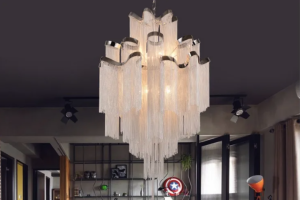Introduction
In recent years, the concept of wabi sabi has become increasingly popular in the realm of art and design. Wabi sabi is a Japanese philosophy that centers on the acceptance of imperfection and the beauty found in things that are natural, simple, and unrefined. This concept has now made its way into the world of textiles, where it has given rise to a new trend known as wabi sabi fabrics. In this article, we will explore the philosophy behind wabi sabi, its application in textile design, and the impact it has on the fashion industry.
The Philosophy of Wabi Sabi
Wabi sabi is a way of looking at the world that emphasizes the beauty of imperfection, transience, and authenticity. It is about finding joy in the everyday, the modest, and the natural. In the context of textile design, this philosophy is about embracing the unique qualities of the materials used and the imperfections that arise from the handcrafted process. Wabi sabi fabrics are not meant to be perfect or machine-made. Rather, they are meant to be imperfect, and to carry the marks of the craftsman’s hand. This approach reminds us that nothing in this world is perfect, and that there is beauty in the flaws and irregularities that make each piece unique.
The Application of Wabi Sabi in Textile Design
Wabi sabi fabrics can be made from a variety of fibers, including cotton, linen, silk, and wool. They are typically characterized by their natural colors, muted tones, and minimalistic patterns. These fabrics are often produced using traditional methods, such as hand weaving, indigo dyeing, or shibori. The result is a textile that is both delicate and sturdy, with a subtle texture that adds depth and interest to any design.
In addition to their unique aesthetic, wabi sabi fabrics also have practical benefits. These textiles are often made from sustainably sourced fibers and crafted using traditional techniques, which reduces their environmental impact. The focus on quality and craftsmanship also ensures that these fabrics are durable and long-lasting, and that they will stand the test of time.
The Impact of Wabi Sabi Fabrics on the Fashion Industry
The emergence of wabi sabi fabrics has had a significant impact on the fashion industry. Many designers are now incorporating these textiles into their collections, adding a touch of authenticity and simplicity to otherwise complicated designs. Wabi sabi fabrics also appeal to consumers who are looking for a more sustainable and ethical alternative to fast fashion. These textiles offer a sense of connection to tradition and a reminder of the importance of craftsmanship in a world that is increasingly dominated by mass production.
Conclusion
The rise of wabi sabi fabrics is a testament to the enduring appeal of natural materials and traditional craftsmanship. These textiles remind us that imperfection can be beautiful, and that there is value in the irregularities and flaws that make each piece unique. As the fashion industry continues to grapple with issues of sustainability and ethical production, wabi sabi fabrics provide a refreshing alternative that emphasizes quality, authenticity, and simplicity.
























